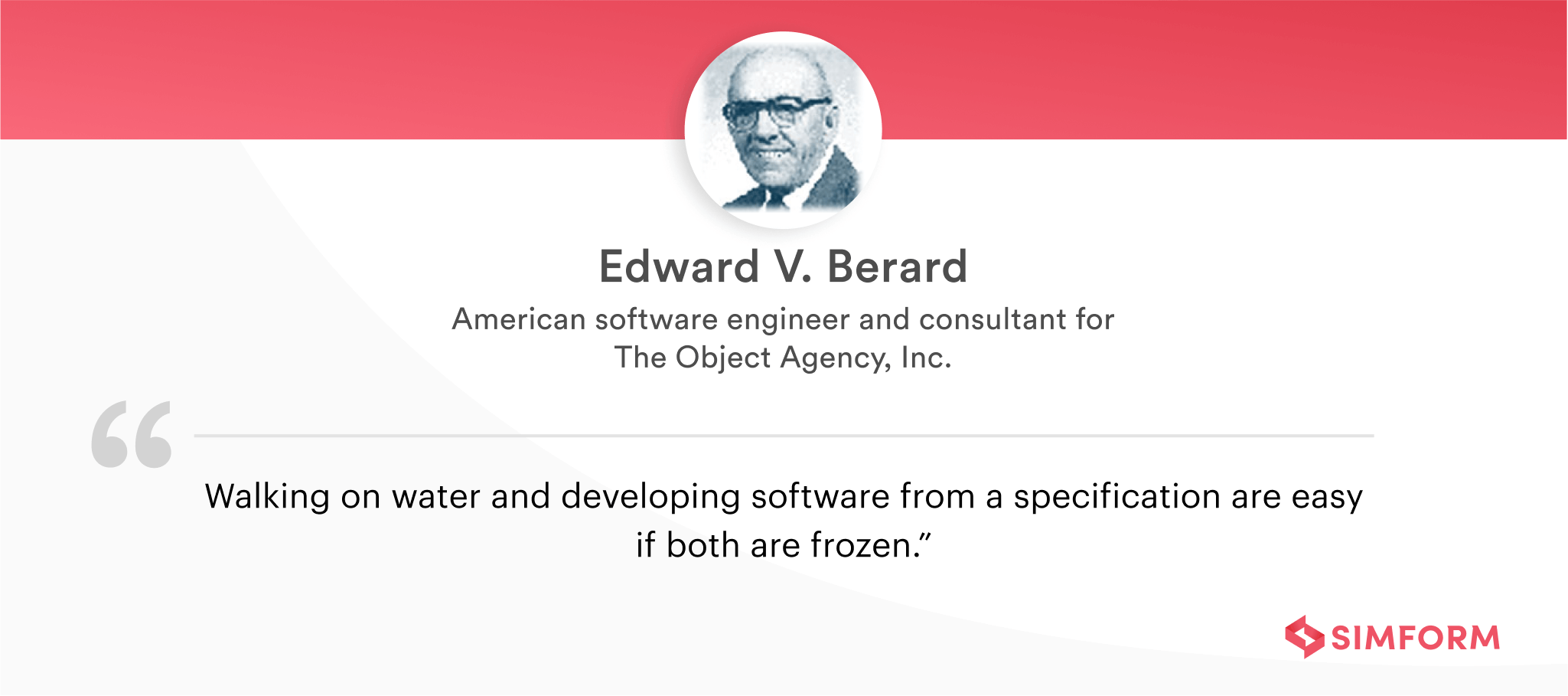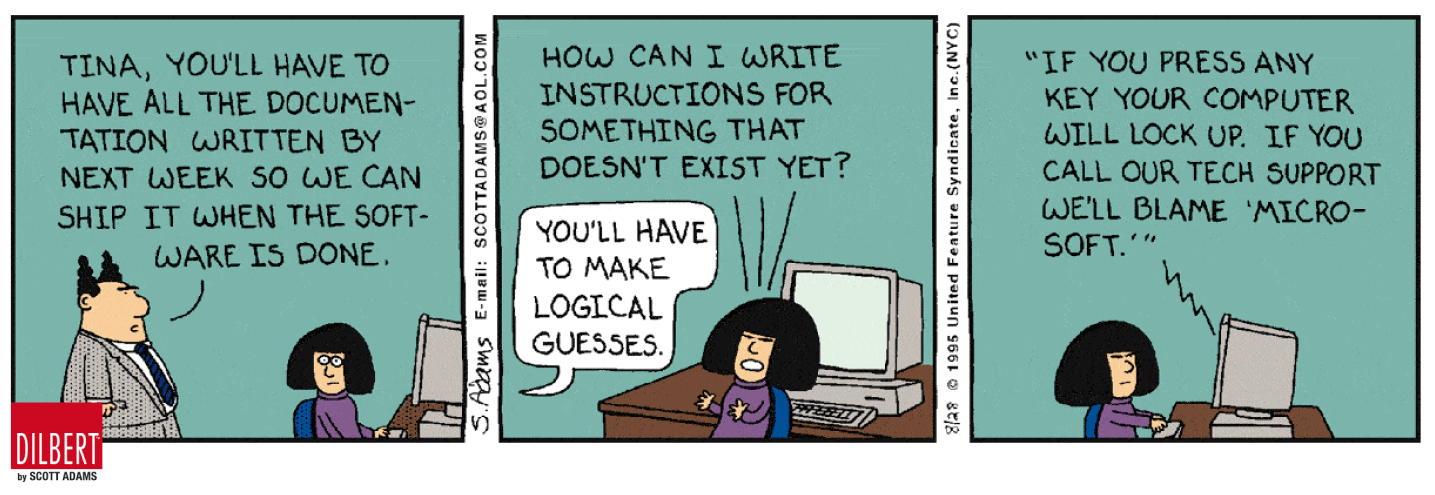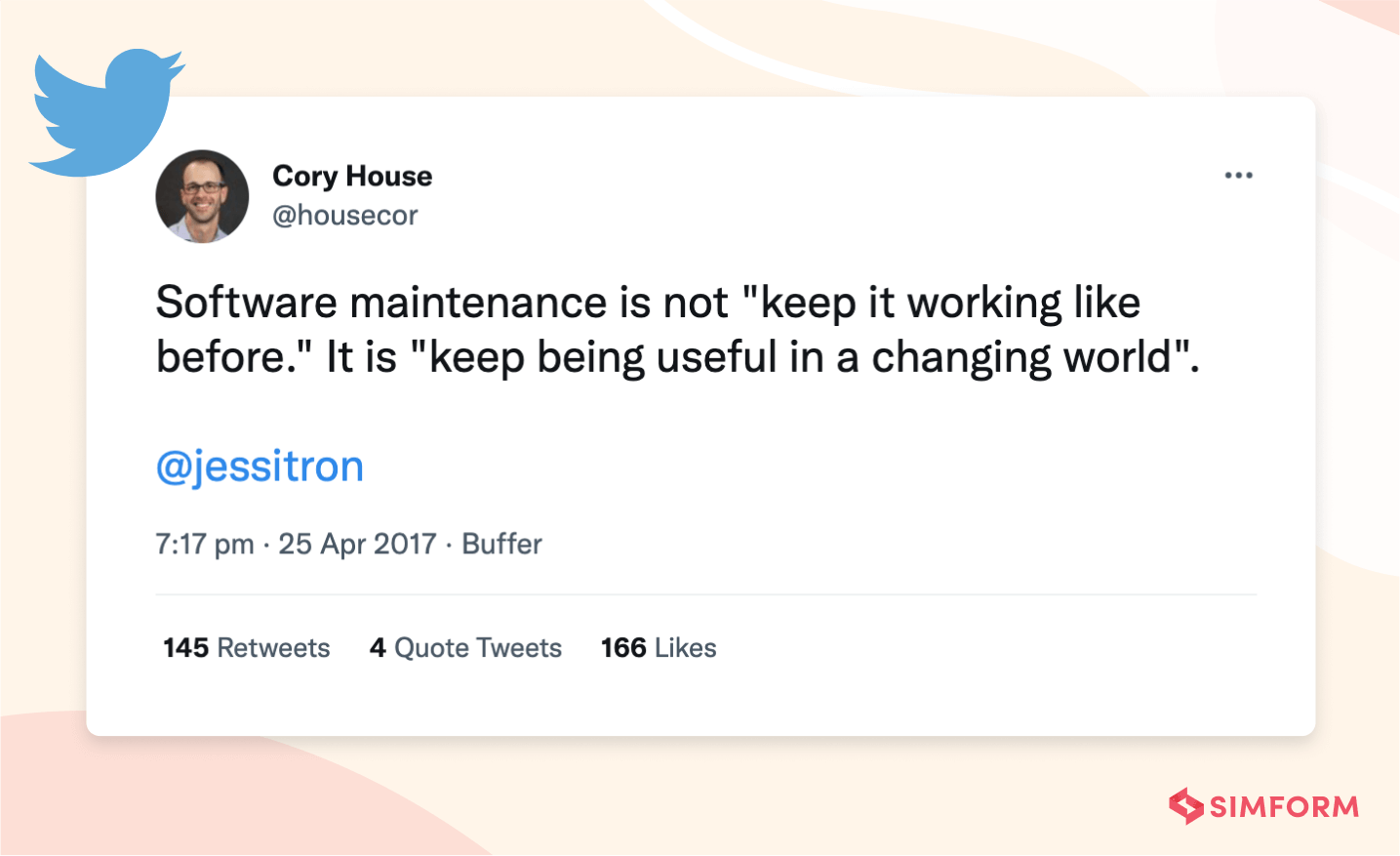What comes to your mind first when you hear the word software development? Complex commands, coding standards, algorithms, and data structures. Right? The code written with strange symbols and characters sometimes seems like an alien language. But the truth is – leading software engineers recommend writing code that is easy to understand.
Software development is a feat in itself, and the complexity of modern-era software applications doesn’t make it any easier. The instances of cyberattacks have also hiked drastically over the past few years. Here software development best practices can make the entire process simpler, effective, and less burdensome. With these practices, you can easily avoid common pitfalls, write excellent codes and meet deadlines on time.
This article introduces the best software development practices to help you make the most of your development process without reinventing the wheel.
Why have best practices for software development?
Software development practices have received considerable attention lately, along with a broader set of agile software development methodologies that advocate incremental delivery, extensive customer involvement, and face-to-face communication.
Every business needs best practices to reduce technical debt, improve existing code, and boost money efficiency, particularly useful for developing software products. Moreover, these best practices will help your software development team to have complete control over the code. Here are the best practices for the main phases of SDLC –
10 Best Practices for Software Development
- Have an inclusive software cost estimation
- Define your Minimum viable product
- Focus on different user scenarios
- Prototype only what you need
- Get the right users for testing
- Adopt best coding practices
- Document each and everything
- Keep testing agian and again
- Put bug tracking software at work
- Clean up small pieces of tech debt
Here are an overview for the best practices of software development:
Best practices for the planning phase
This first phase of a software development life cycle demands a precise evaluation of the project terms to set the course for the team to create the software effectively within the boundaries.

Here are some points that you need to consider to make your software planning process smoother –
- Clearly define the scope and purpose of the application
- Create a timetable with target goals
- Have a proper leadership structure
- Delegate tasks separately with written acceptance criteria
Now let’s look at some of the best practices for the planning phase. –
1. Estimate time for software development
Accurate time estimation for software development helps keep all the team members on the same page. Moreover, it lets you determine the number of tasks or subtasks that can be completed within a specific timeframe. Overall, a precise time estimate offers transparency across the entire development process.
Here is how you can estimate the development time with great accuracy –
- Consider the complexity of a project and explain it to concerned members
- Make an initial estimate of project duration based on your experience and business goals
- Build the scope of work that covers project requirements
- Consider productivity drops and communication gaps
- Add a risk buffer of around 20%
Have an inclusive software cost estimation
To understand the approximate cost of software development, you can talk with an experienced IT company to make the most realistic estimates.
Here is how you can make an accurate estimate of software costs –
- Include the scope, size, and timeline for the project
- Define how many developers you need
- Consider the complexity of the development project
- Choose whether to develop software in-house or outsource
Considering the above factors, we can say that the estimated software development costs may generally range between $55,000 to $2,55,000.
2. Define your Minimum Viable Product
Minimum Viable Product (MVP) is a product with the minimum, must-have features to ideate a product development cycle. In addition, it assists the product team in getting user feedback quickly to build a better product.
Let us look at how to define your MVP objectively and logically –
- Understand your business requirements
- Identify problems you want to solve for your buyer persona
- Clearly map out the user journey
- Clarify the programming language you want to use
- Prioritize the features to integrate
- Translate your MVP into a Sureshot action design
Design and prototyping best practices
After the ideation phase, you should start working on the front-end design. The best way of designing is to use the information architecture process. First, create low-fidelity prototypes – rough concepts early in the process to test the various structures and workflows of the solution.
Once the final low-fidelity mockup is determined, the visual, interaction, and User Interface (UI) designers further tweak the idea for a high-fidelity prototype to display how the solution will appear and perform.
Now let’s look at some crucial tips that can make prototyping more efficient –
1. Focus on different user scenarios
Create user personas and analyze how the personas could interact with your mobile app or website. Furthermore, it is imperative to design overall user flow rather than particular areas of your product. Also, you may create functioning prototypes that replicate the desired end product by focusing on user situations.
2. Prototype only what you need
Do not stress upon each and every detail to build a perfect software prototype. Instead, you need to make your integration faster as the functionality of your software accounts for a majority of user interactions.
The prototype level also depends on the user interactions your end product will derive. For instance, if animations are a core component of your user experience, then ideally, you need to develop a mid-level prototype.
3. Conduct usability testing
Usability tests might differ significantly. However, selecting the right users is necessary for a successful usability assessment. A mix between users with domain experience and brand-new users is what you want, ideally.
For instance, if you are revamping your online travel site, you can divide users into two groups – those who already have an account and those who are entirely new development.
Development best practices
This phase can be considered one of the most crucial phases of an SDLC as it lays the foundation for developing software. This phase is distributed in two parts – building IT infrastructure and developing databases and codes. Product managers, stakeholders, the development team, CTO, etc., are part of a development team.
Here are some effective practices to get started with software development –
1. Integrate best practices for coding
Good quality code is an essential investment for the project. To carry out your desired actions, you must ensure your code is correct; otherwise, the computer will not understand your commands.

You need to learn best practices for coding to ensure better accuracy in coding. Here are a few –
- Deploy a Source Code Management or Access Control tool
- Perform security audits to reduce code vulnerabilities
- Educate your programmers on the latest tools and frameworks
- Conduct an architectural risk analysis
- Make code scanning tools an integral part of your process
2. Document each and everything

Documentation is a detailed handbook for users that outlines your software’s features and troubleshooting instructions in case users encounter a problem. Other than this, the entire software development process depends on its ability to evolve.
Every app you use continuously updates every once in a while. The developers constantly devise ways to make it scalable by adding new features or fixing bugs throughout a software project’s lifecycle. All that is possible thanks to proper testing.
Testing best practices
Continuous testing gives you clarity about the code and pinpoints even a minor bug in your coding process so you can eliminate it beforehand.
Overall, in this stage, you need to run tests like Unit testing, Integration Testing, Regression Testing, System Testing, Performance Testing, etc., to trace defects and fix them until the product meets the original specifications.
Here are the best practices that your QA should consider for testing –
1. Build a secure testing environment
A dedicated team of software testers can perform a wide range of penetration tests to discover potential vulnerabilities.
Here are the primary practices for a secure code testing environment –
- Get familiar with security risk profiles and ISO security standards
- Let your team members undergo a rigorous security training
- Stimulate regional test scenarios by creating testing labs
- Assess responsiveness of user interface under different circumstances
2. Make your development process test-oriented
You should consider initiating software testing right from the beginning of the development process. For this, you can use Test-driven Development (TDD), unit testing, and pair programming to catch bugs much earlier and eliminate them quickly.
Follow these strategies to expand your focus on testing –
- Conduct requirement analysis to prioritize the type of assessments
- Turn the product analysis into a documented assessment strategy
- Write test cases only after a clear understanding of the project outcome requirements
- Establish parameters to conduct a test
- Refactor codes to avoid their duplication
Following the above steps can enhance design quality, save time, and ensure that your software meets the desired goals.
3. Run frequent QA Tech Reviews
Constant technical reviews are highly beneficial for finding functional or logical errors in the earlier stages of software development. Generally, a logical error is caused by a bug that disturbs the behavior of a feature. In contrast, a functional error occurs when the referential transparency gets broken down.
To ensure a successful tech review, you can follow these tips –
- Define the purpose of the meeting clearly
- Set a detailed meeting timeline and inform members beforehand
- Examine source code to track bugs and assess designing
- Document everything properly
By following the above tips, you can discover exciting findings and reach the subsequent decisions deployment.
Deployment best practices
The software is finally available to the end users and stakeholders in the deployment phase. Software deployment is a process of making updated software available to your users.
In addition, software deployment includes various activities like installing, configuring, testing and monitoring the performance of newly deployed environments. For instance, there are a few practices for deploying software like A/B testing, Shadow Deployment, Grey Box Testing, Black Box Testing, White Box Testing, etc.
Here are the best practices that can assist you with an effective software deployment –
1. Separate clusters for non-production and production
Having an enormous cluster often creates problems for security and resource consumption. Therefore it is crucial to have two clusters at the minimum – one for production and another for non-production.
Here is how you can separate clusters for production and non-production –
- When using Kubernetes, use the K8 cluster for each environment
- Keep all the clusters in different namespaces
- Give access to the production cluster to fewer people
- Iterate faster to prevent production failure
2. Carefully collect deployment metrics
Kubernetes clusters have distributed services that support dynamic software. Therefore, it becomes crucial to have appropriate metrics to enable the applications to adapt to traffic. In addition, metrics can help measure the success of the deployment, enabling continuous monitoring of the performance of an application.
Follow these ways to collect Kubernetes clusters with ease –
- Deploy Kubernetes cluster to run commands
- Use kubectl get to run commands against Kubernetes clusters and query the metrics API
- Retrieve compact metric snapshots
- Query resource allocations
- Employ Kubernetes dashboard to browse cluster objects
3. Implement a continuous integration server
A continuous integration server is a software that centralizes all of your integration processes and provides a dependable building environment. In addition, it is highly adaptable and allows you to create different projects for various platforms.
The most critical consideration when utilizing a CI server is having a clean machine ready for installation because an environment free of excessive tools, environment variables, and other customizations is essential for running the CI server and overall process properly.
Here are the practices to run a continuous integration smoothly –
- Frequently commit codes
- Fix broken builds as soon as possible
- Write unit tests
- Ensure all tests must be passed
- Avoid breaking software maintance
Best practices for software maintenance
Software developers must eliminate deterioration, enhance functionalities, fulfill changing user requirements, and ensure their product’s success. This is achieved through software maintenance.
Software maintenance covers all the modifications and updations done after software product delivery. It is about correcting logic, software product design, and code flaws. However, software maintenance requires minimal planning processes with a corrective maintenance strategy.
Here are some effective software practices you and integrate for better maintenance –
1. Put bug tracking software at work!
Imagine you’ve written new software and tested it to ensure it works. But when preparing to release the latest software version, you may find a problem that needs to be fixed first. This is where using bug tracking software comes in handy; here’s how –
- To report software bugs or issues as soon as possible,
- To integrate with source code management tools to track bugs in single files,
- To manage the bug reports, prioritize, and choose which ones should be fixed in a specific release or after adding a new feature.
2. Use a version control system
A version control system is essential in a software developer’s toolkit, making collaboration easier with other developers and increasing overall efficiency.
Here are some remarkable benefits of version control –
- Preserving efficiency and agility
- Tracking changes in software
- Adopting a practice of branching features
Git, Subversion, Mercurial, Apache Subversion, Helixcore, etc., are some of the popular version control tools.
3. Clean up small pieces of tech debt
You must adopt a new integrated approach that encourages long-term thinking to reduce your technical debt. For this, you can drive code reusability across the entire organization.
Also, you can follow this method to reduce tech debt in Agile –
- Use tools like Coverity and SonarQube to calculate the tech debt ratio
- Integrate automated testing to scan issues in code while updating the module
- Structure your development process by using robust project management tools like Trello or Hive
- Refactor your code to improve its maintainability and readability
Redefine your software development with Simform
There is nothing like an ideal software development project, as each has its own flaws, characteristics, code bases, use cases, testing patterns, etc. However, software engineering best practices help you work more efficiently and secure projects, making it less likely to introduce bugs that hackers could exploit. Also, you can keep pace with modern trends and ensure relevance in a thriving digital landscape, even in the long run.
So, if you still have not adopted software engineering best practices, it is high time to choose the relevant ones for your business. At Simform, we are devoted to helping companies get a team that adapts to their company values and beliefs. Feel free to connect with us to get your software developed by the top software engineers.
